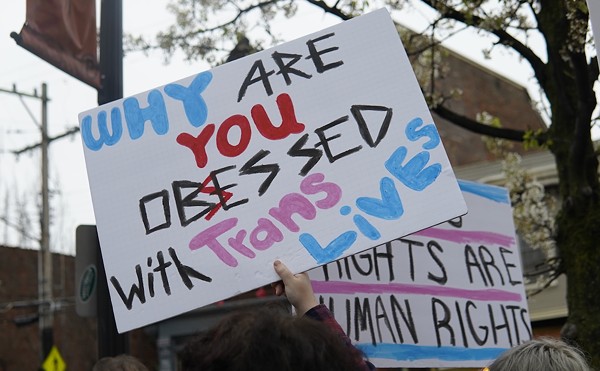|
Many political observers were shocked last week when all nine incumbents won re-election to Cincinnati City Council, despite some members facing troubles that ranged from a police investigation of an alleged assault involving a councilwoman to an organized mass mailing campaign that tried to single out a controversial councilman for defeat.
Some people say the election results show the hard-to-overcome power of incumbency, while others attribute the outcome to the unusually small voter turnout, a paltry 28 percent of the city's registered voters.
A statistical analysis of election results in city council races from 1999 to the present, however, reveal an interesting pattern. When adjusted for turnout, the percentage of votes needed to get onto city council has risen.
In fact, the top vote-getters this time had a higher percentage of ballots cast than their counterparts did in past elections. Similarly, the bottom three vote-getters who made it onto the nine-member council — in positions seven, eight and nine — also received more votes than their counterparts did in the past.
'Must be happy'
Although some incumbent council members say the election results were a stamp of approval from voters about how they've conducted themselves during the current term, the level of support for some incumbents dropped from two years ago, while others saw an increase in their popularity.
In short, the statistics are one indicator of which candidates' political fortunes are rising and which are waning.
One incumbent, Democrat Laketa Cole, told CityBeat on Election Night that voters like the current council and view it as making progress on items such as The Banks riverfront project and reducing crime.
"The voters have been pleased with how we've been doing," Cole said.
"There's a lot less bickering than with past city councils. We may not always get along, but it's how we agree to disagree. We all want to move Cincinnati forward. We just sometimes have different ideas about how to do it."
Last winter city council made headlines when a tri-partisan faction nicknamed "the Fiscal Five" proposed budget changes that Mayor Mark Mallory and the four other council members opposed. After heated debate, most of the proposals weren't included in the final budget; others were modified. Meanwhile, the bad blood lingered onto other issues.
Cole downplays the discord, saying it isn't as bad as the personality conflicts that plagued previous councils.
"I've been around City Hall as a staff member and a council member through four city managers, and it's a lot better these days," she said.
Mayor Mark Mallory echoed that message at the city council meeting held the day after the election.
"They must be happy," he said. "They returned you all."
Not so fast.
An analysis of election results by the Hamilton County Democratic Party and recalculated and verified by CityBeat show that four members of the Fiscal Five fared worse with voters this time than during the 2005 election.
For example, Cole dropped from third place in 2005, when she received nearly 30,000 votes, to seventh place this time, getting only about 24,000.
Republican Leslie Ghiz dropped one spot, from fifth to sixth, between the two elections; Democrat Jeff Berding dropped two spots, from sixth to eighth; and Republican Chris Monzel dropped two spots, from seventh to ninth.
Only Charterite Chris Bortz improved on his performance, rising from eighth place in 2005 to fifth this time.
Classroom shift
By comparison, the council members who opposed the Fiscal Five largely maintained or improved their performance. Democrat John Cranley was the top vote-getter in both elections; Charterite Roxanne Qualls finished second this year, the same position that her predecessor, Jim Tarbell, held in 2005 before he left due to term limits. Democrat David Crowley jumped from fourth place in 2005 to third place this time; and, in the biggest turnabout, Democrat Cecil Thomas jumped from ninth two years ago to fourth Nov. 6.
Crowley, who begins his final term in January due to term limits, was heartened by the results.
"It seems like, by and large, the council overall is doing OK but there was kind of a re-ordering in the seats of the classroom," Crowley says. "I think (the results) say more voters were in tune with what we were saying than what the others were."
With 25 candidates seeking to fill nine council seats, only three people — Cranley, Qualls and Crowley — got approval from a majority of the 59,246 voters who cast ballots. Beginning with fourth-place finisher Thomas on down, the others all got 44 percent or less.
In other words, a full 60 percent or more of people who cast ballots didn't vote for Cole, Berding or Monzel — but they still won re-election.
The results are prompting some pundits and activists to renew their calls to change how council members are elected, either switching to electing some by district or using the older system of proportional representation.
In 2003 a citizens' panel formed by then-Mayor Charlie Luken recommended converting to a system in which council would be expanded to 12 members. Under the proposal, nine council members would've been elected from districts and serve two-year terms; three council members would've been elected at-large, by voters throughout the city, and serve four-year terms. Council ignored the recommendation.
Others prefer proportional representation, or PR. For 32 years prior to a charter change in 1957, council members were elected through a PR system, which had voters rank candidates in order of preference and ensured all political groups were represented in proportion to their strength in the electorate. Voters rejected a return to the PR system in 1988 and 1991. ©





